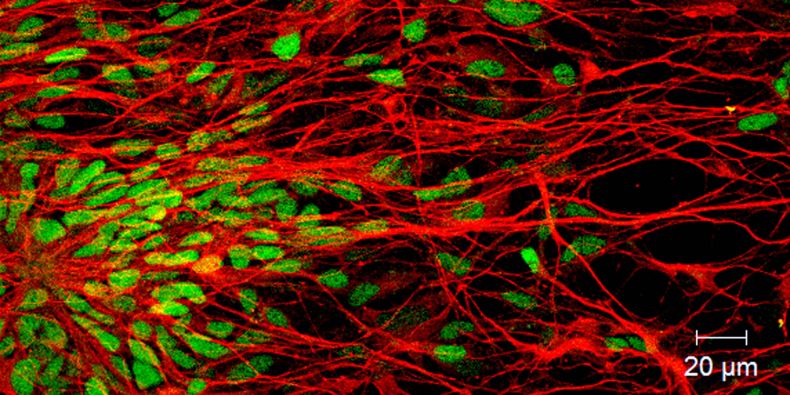Scientists at the Faculty of Medicine have discovered that in the early development of an individual a small protein – an enzyme – determines which stem cells become nerve cells and which provide the basis for the creation of internal organs. The results of their work have been confirmed by Cell Stem Cell, one of the most prestigious science magazines, after a long verification procedure.
These are the first results produced by a solely Czech research team to have been published in this journal. In future this discovery will be used in the preparation of therapeutic cells effective in the treatment of certain neurodegenerative diseases, for instance.
In the development of a human embryo it is determined at an early stage which cells will form the basis of so-called soft organs, such as the liver, spleen and lungs, and out of which the whole nervous tissue, including the brain, will arise. The researchers have established that an enzyme called PTP1B is behind it all.
“If the embryo is very active its stem cells develop specialized cells which form the liver, for instance. If enzyme activity is low, nerve cells originate, leading, let's say, to the formation of the brain," explains Yuh-Man Wadeley, head of the research team. She came to Masaryk University two years ago on the SoMoPro programme and became a member of the team of the Faculty of Medicine's Petr Dvořák.
“For a long time it was thought that just two molecules were behind the whole mechanism," says Dvořák. “Now they have been joined by a third molecule, which is perhaps the key one. Before the publication of results we had to go through an extremely demanding review process. For the verification of the discovery it was necessary to use practically all existing methods."
Research went on for nearly three years and involved scientists from abroad. It cost almost two million Czech crowns and was co-financed by the Ministry of Education, the Region of South Moravia and the European Commission.
Although research is now at an elementary stage, in future the discovery may have a practical impact. Knowledge of the mechanism could make it easier to treat serious neurodegenerative illnesses such as Parkinson's disease by the use of so-called cell therapy.
